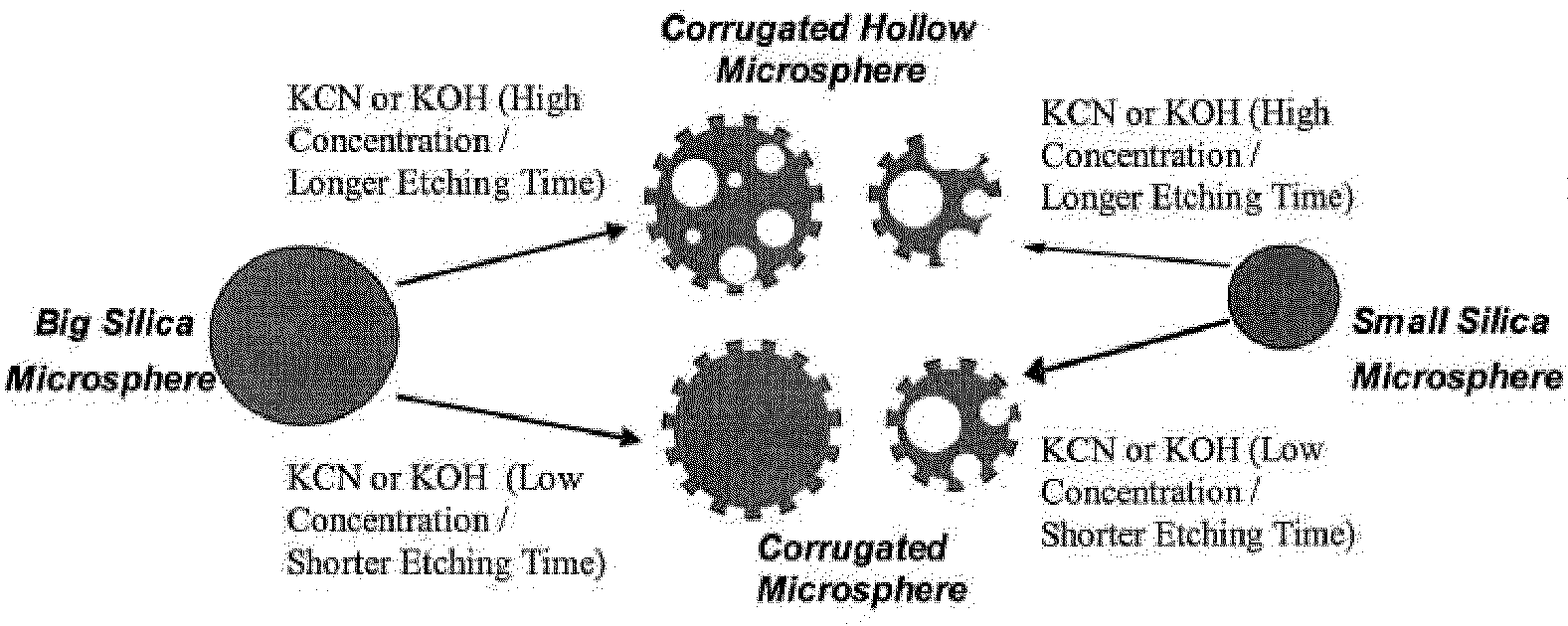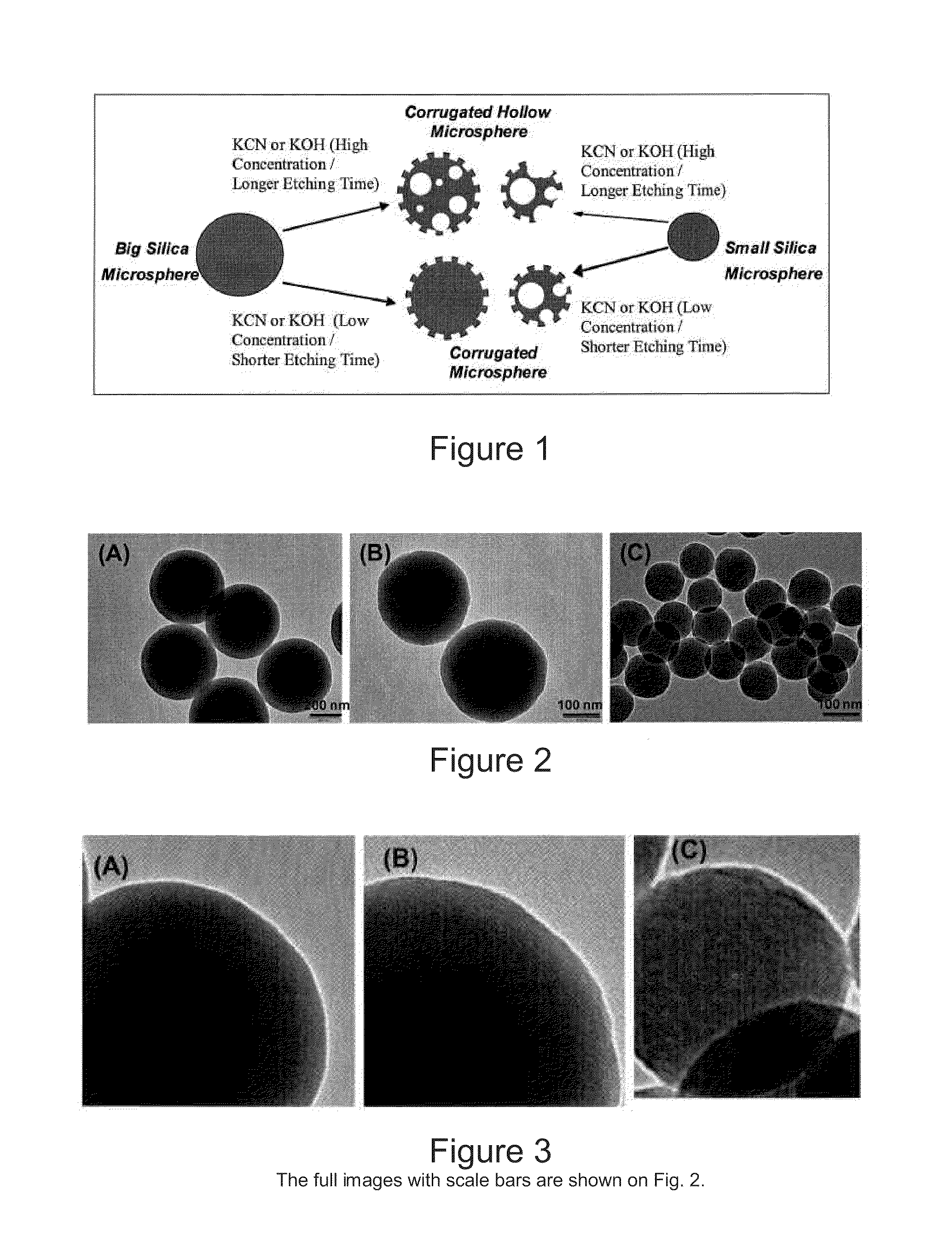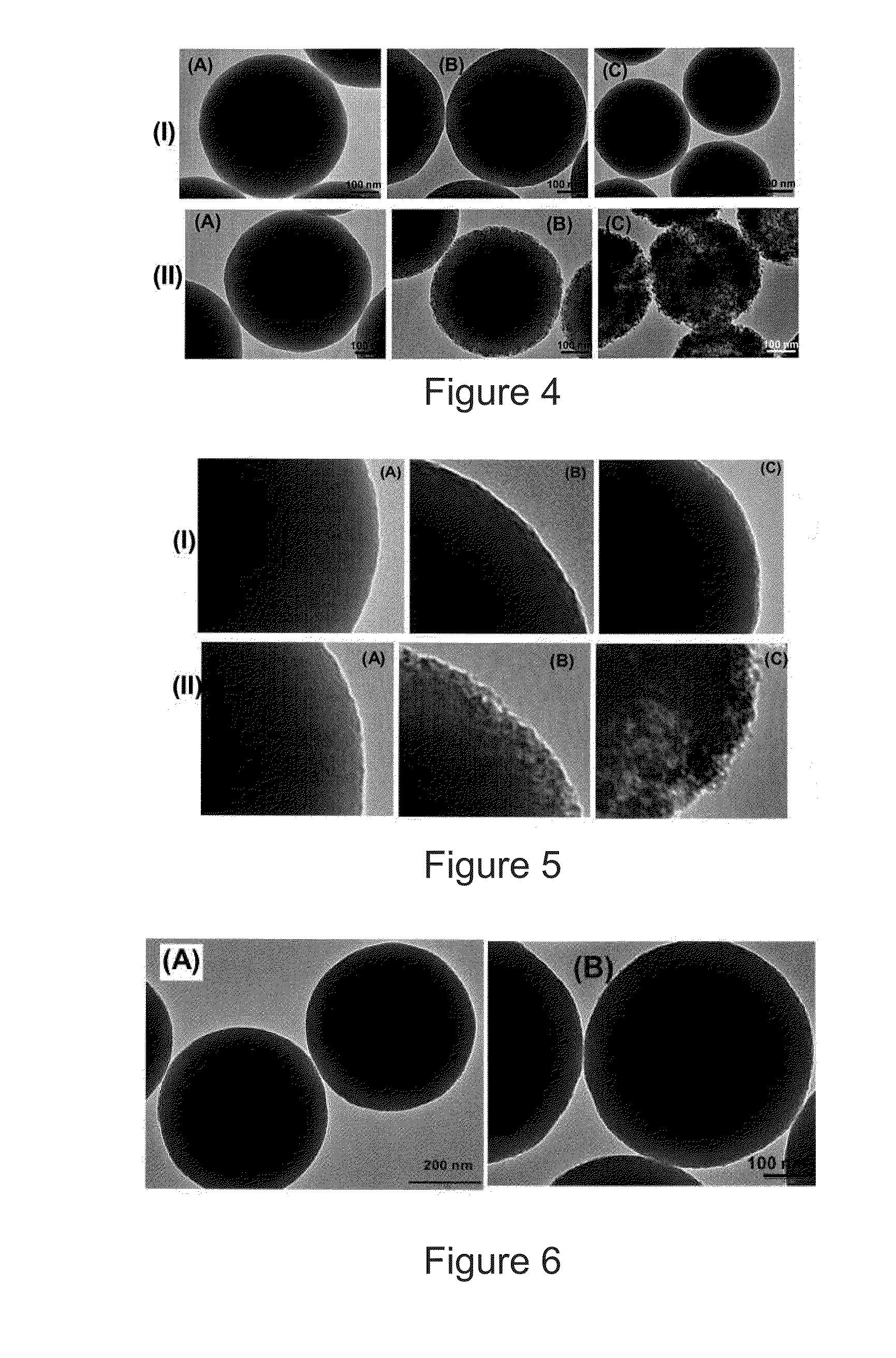Corrugated and Nanoporous Microstructures and Nanostructures, and Methods for Synthesizing the Same
- Summary
- Abstract
- Description
- Claims
- Application Information
AI Technical Summary
Benefits of technology
Problems solved by technology
Method used
Image
Examples
example 1
[0040]This Example describes the synthesis of silica microspheres of various sizes. The synthesis of the various sized silica microspheres, was carried out following a Stöber method. In particular, silica microspheres of average sized diameters 450, 250, and 110 nm (see FIG. 2) were synthesized by the Stöber method.
[0041]Briefly, 2.92 g of tetraethoxysilane (TEOS) was added into 5 mL of 5 M ammonia solution in 50 mL ethanol and 1.8 g of water under stiffing to hydrolyze TEOS. After 12 h of stiffing, the solution was centrifuged and the precipitate was washed twice with ethanol and dried in a desiccator under vacuum resulting in silica microspheres of 450 nm in diameter. The as-prepared silica microspheres of diameters of 450 nm diameter were named Si450. The sizes of the silica spheres were changed by varying the concentration of the base in the solution. Silica microspheres with diameters of 110 and 250 nm were also synthesized by following the procedure above but by using 2.0 and ...
example 2
[0043]This Example relates to the synthesis of corrugated or nanoporous silica microspheres by etching the various sized silica microspheres obtained in Example 1. These silica microspheres having different diameters were etched with various concentrations of aqueous KCN or KOH solutions for different periods of time under mechanical shaking or under static condition.
[0044]The synthesis of corrugated and hollow microspheres by etching the spherical silica microspheres was carried out in aqueous potassium cyanide (KCN) and aqueous potassium hydroxide (KOH) solutions. In the case of KCN solution, a 0.03 M concentration (pH=11.00 or “high KCN concentration”) and a 0.006 M (pH=10.20 or “low KCN concentration”) were used. For comparison purposes, a 0.03 M KOH solution with a pH value of 12.60 (high KOH concentration) and a KOH solution with a pH value of 11.00 (low KOH concentration), which has the same pH as that of the 0.03 M KCN solution, were used as etchant. In a typical etching syn...
example 3
[0049]This Example describes the investigation of the effect of the size of the microspheres on the etching described herein.
[0050]To investigate the effect of the size of the microspheres, the same mass of smaller sized of silica microspheres, Si250 and Si110, as sample Si450 were taken and subjected to etching under the same conditions.
[0051]The results showed that the smaller silica microspheres, Si250, exhibited more pronounced exfoliation and corrugated surface and, in some cases, even hollow structure compared to their bigger counterparts (see FIGS. 8 and 9). The exfoliation of the silica microspheres was more significant again in KOH solution than in KCN solution of the same concentration (FIGS. 8 and 9). This was an interesting observation considering the fact that the total surface area per unit mass or the total number of particles per unit mass was expected to be higher for the smaller microspheres, Si250, than for their bigger counterparts, Si450, and consequently, the r...
PUM
| Property | Measurement | Unit |
|---|---|---|
| Diameter | aaaaa | aaaaa |
| Diameter | aaaaa | aaaaa |
| Magnetic field | aaaaa | aaaaa |
Abstract
Description
Claims
Application Information
 Login to View More
Login to View More - R&D
- Intellectual Property
- Life Sciences
- Materials
- Tech Scout
- Unparalleled Data Quality
- Higher Quality Content
- 60% Fewer Hallucinations
Browse by: Latest US Patents, China's latest patents, Technical Efficacy Thesaurus, Application Domain, Technology Topic, Popular Technical Reports.
© 2025 PatSnap. All rights reserved.Legal|Privacy policy|Modern Slavery Act Transparency Statement|Sitemap|About US| Contact US: help@patsnap.com



